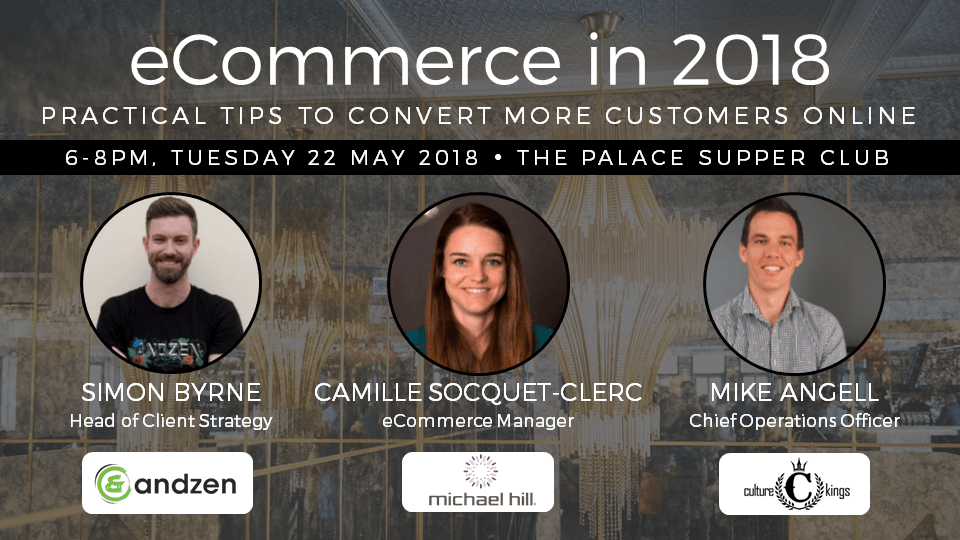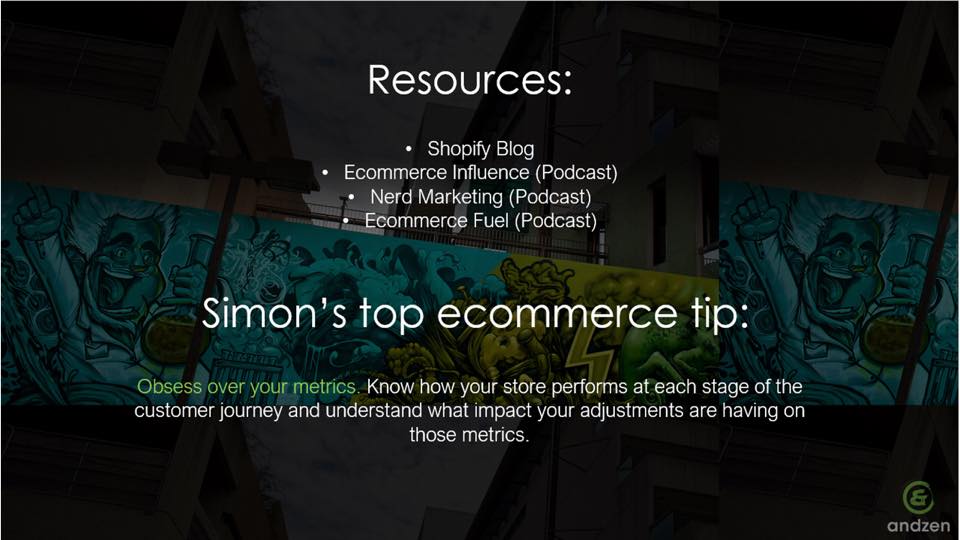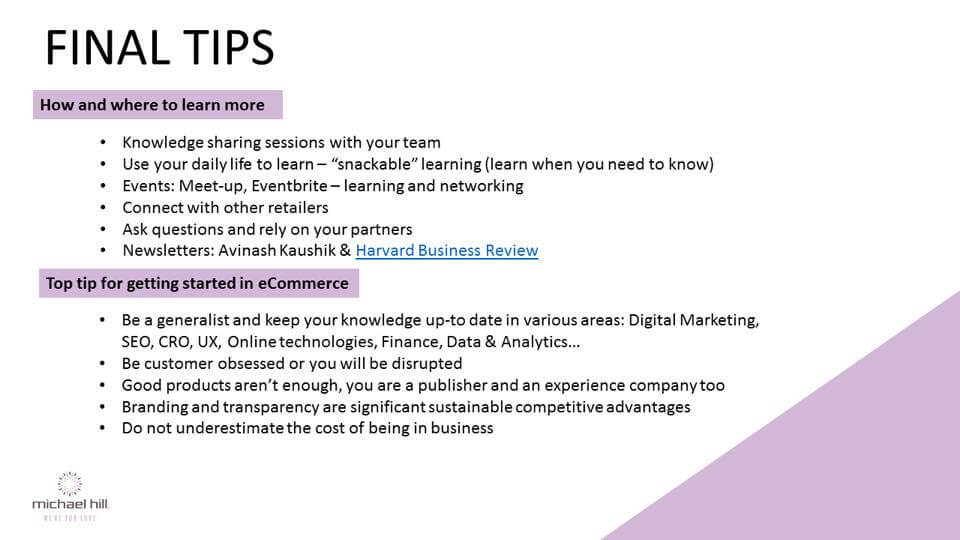Another month means another great Networx event!
Tuesday night’s topic: Ecommerce in 2018 – practical tips to convert more customers online. The panel: Camille Socquet-Clerc (ecommerce Manager, Michael Hill International), Mike Angell (Chief Operations Officer, Culture Kings), and our very own Head of Client Strategy, Simon Byrne.
We had a great range of insights across the board. Let’s take a look at some of the highlights!
Amazon, eBay and Facebook Shop
This year saw the arrival of Amazon on Australian shores, and while many ecommerce brands were collectively cowering in fear of the behemoth that is AMZN, the consensus of the panel was that the launch was reasonably underwhelming.
Nevertheless, the question still remains: should ecommerce brands sell their products exclusively on their own online stores, or should we be looking to markets like eBay, Amazon and Facebook Shop to list our wares as well?
Answers varied, but the panel did seem to agree that this strategy works for some, and not for others. Expensive, luxury or aspirational brands, Simon Byrne told, generally don’t need to stock their goods anywhere else but on their own channels. Doing otherwise can take away their control over their brand, and cheapen the service. Camille Socquet-Clerc agreed somewhat, stating that Michael Hill had had success with third party retail channels, but only with some product lines.
Influencer Marketing
2017 saw Influencer Marketing take off in the ecommerce space. There are countless everyday citizens with hugely popular Instagram (or other social) accounts – and businesses like Scrunch and Tribe are helping brands leverage their commercial power.
Influencer Marketing is a controversial topic. Without question, there are a litany of pros and cons. On one hand, it allows brands to target very specific audiences, and boosts social proof by enabling them to buy endorsements through a huge marketplace of tituarly ‘influential’ people. On the other, due to advertising restrictions on social platforms like Instagram, it can be extremely hard to report on. You aren’t really able to see concrete returns on your Influencer Marketing investments.
Perhaps we’ll see improvements down the track, but currently, Influencer Marketing seems to be working for some and not for others. All merchants can do is try it.
AfterPay and zipPay
‘Buy Now, Pay Later’ services like AfterPay and zipPay have been, and continue to be, a godsend for ecommerce brands. As Mike Angell said, “If you don’t have AfterPay installed on your website, do it immediately when you leave tonight”.
Paying in installments is very attractive to customers – especially for larger, more expensive items. Camille Socquet-Clerc spoke highly of how these services have made the high-end jewellery of Michael Hill a more attainable luxury for their buyers, and sales improve almost immediately once the service was implemented on their online store.
One very interesting part of the discussion around installment payment services was their ‘risk-free’ nature. While these services do take a larger percentage of the sale than standard card payments (on average, around 5%) they’re also completely responsible when customers can’t pay all their bills. None of the non-payment risk lies with the vendor. As Mike Angell said, this makes these services a ‘no-brainer’ for brands in 2018.
Salvaging lost sales and lapsed customers
We pour so much time, effort and money into attracting customers to our websites, that when they come, see our products, and leave without purchasing it can feel like a tragedy. Especially when they have gone as far as to add products to their cart. Thankfully, there are plenty of new tools you can use to re-engage these lost leads.
Simon Byrne took us through a few strategies he’s had success with in the past. These covered browse abandonment, abandoned carts, and lapsed customers, and helped encourage customers to return and shop again.
Email is great for laddered incentives and timely follow-up reminders. And if you didn’t get a visitors email address, socials can also be leveraged through platforms like Shoelace to help put your brand back in front of your visitors to encourage them to return to shop.
Acquisition vs Retention
There are three main growth multipliers in ecommerce:
- Number of Customers
- Average Order Value
- Frequency of Purchase
The problem is, most businesses focus the vast majority of their attention on acquiring new customers. But as we’ve talked about before, that’s not necessarily the surefire route to the best profits. Spreading your marketing budget more equally across gaining new customers, nurturing them to repeat purchases, and increasing their order values is a much better way to grow your business.
In 2018, ecommerce is a booming industry. But selling online means you’ve opened yourself up to an entire planet’s worth of competition. Vendors need to focus more on providing the best possible service to keep their existing customers happy and buying – and that means having a laser-focus on their retention strategy.
A few takeaways
I’ll leave you with the wrap-up slides from Simon and Camille. These are their final tips to all vendors as we make our way into the second half of the year.
If you’d like to join the Networx community, you can sign up here!
You might also like to join our own Meetup group. We hold regular Ecommerce Marketing Mastery sessions in our South Brisbane office. We’d love you to come along!




